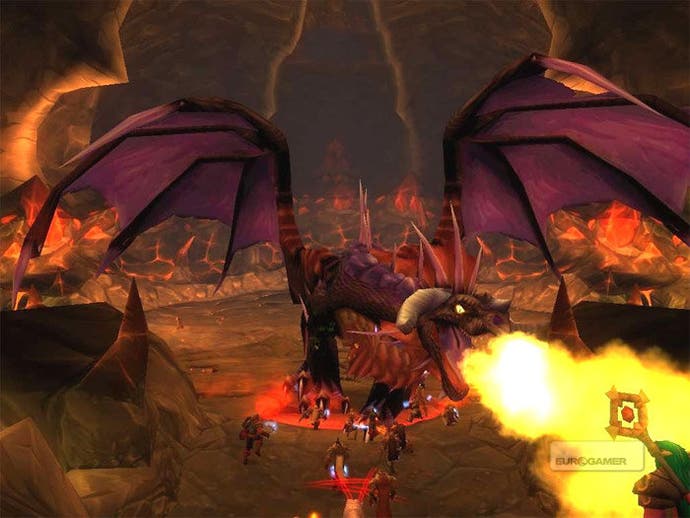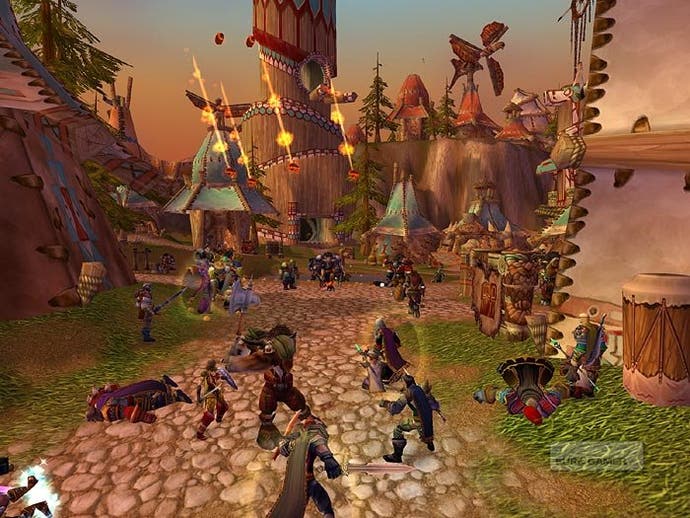The Making of World of Warcraft
Part One: From concept to launch.
Chilton joined the team a year before World of Warcraft would launch in North America. He was thrilled to be working for Blizzard, a company he had been a fan of for years - but with 12 months to go, the amount of work left to do on the game was daunting, to say the least.
"I was very surprised by how much stuff hadn't been done," he recalls, laughing. "I arrived and I was like, oh my god! We have to do how much more? We have how long to do it?!"
Not only was the game lacking in content - the level cap at this time was level 15, with little more than unfinished artwork existing for the higher-level zones - but decisions still had to be made about major game systems. "It was still very rough and nebulous about what a lot of the [character] classes would do," Chilton remembers. "A lot of classes were being redesigned, and our entire combat system got redesigned some time after I came on board.
"Huge numbers of game systems didn't exist. The talent system didn't exist, so there wasn't a lot of distinction between characters of the same class, other than what hair or moustache you'd picked. The auction house and the mail system didn't exist. PvP [player-versus-player combat] didn't exist and none of the endgame ideas had been evolved - we knew that we wanted to have raids, but that's all we knew. There was still a ton of WOW that hadn't been built and wasn't really known."
The final twelve months, then, were defined not only by frantic work to get the game into a complete state - but also by a succession of "eureka" moments, as the team hit upon the ideas and solutions that would turn World of Warcraft into the game it is today.

Chilton fondly recalls some of those milestones. "When we finally settled on what the talent system was going to be, that was pretty defining for us," he says. "Before that, there wasn't enough character differentiation. People didn't feel different enough from everybody else. The talent system made a big difference in terms of how people felt invested in their character.
"A eureka moment for our itemisation was when we came to the conclusion that if we were to split stats up on an item, we needed to increase the total stat budget for the item. It sounds like an arcane or a really nerdy thing, but it was a big deal, because we were struggling with how to get people not to just collect items of the same stat. How do you make warriors want items that aren't just pure strength, for example? It was a decision that has defined the way our itemisation works ever since."
Other big decisions were more contentious with the rest of team. The large-scale dungeon raids that characterise an MMO endgame were the topic of many discussions, with everything from the cap on the number of players (figures from 20 to 100 were batted around, with 40 being eventually settled upon) to the question of instancing being argued about passionately.

Instancing - separating the dungeons from the world itself, so that teams of players could work through them without interruption from other players - turned out to be especially controversial. "Oh yeah, that was a really hot topic," Chilton says. "At some points we even had the idea that some raids wouldn't be instanced and others would be. We were really torn - we wanted to capture the magic of guilds racing towards server firsts, and that sort of thing."
The decision, in the end, went back to WOW's core philosophy of accessibility. "As we thought about it more and more, we really felt like people had an expectation of being able to do the content," he explains. "We would still be able to get some of that feeling of people getting server firsts - they didn't necessarily have to be denying each other access to content in order to be able to do that."
What Chilton remembers as the single most contentious issue, however, was the split between the Horde and Alliance factions - with the sides not only competing against one another, but being prevented from communicating with each other.
